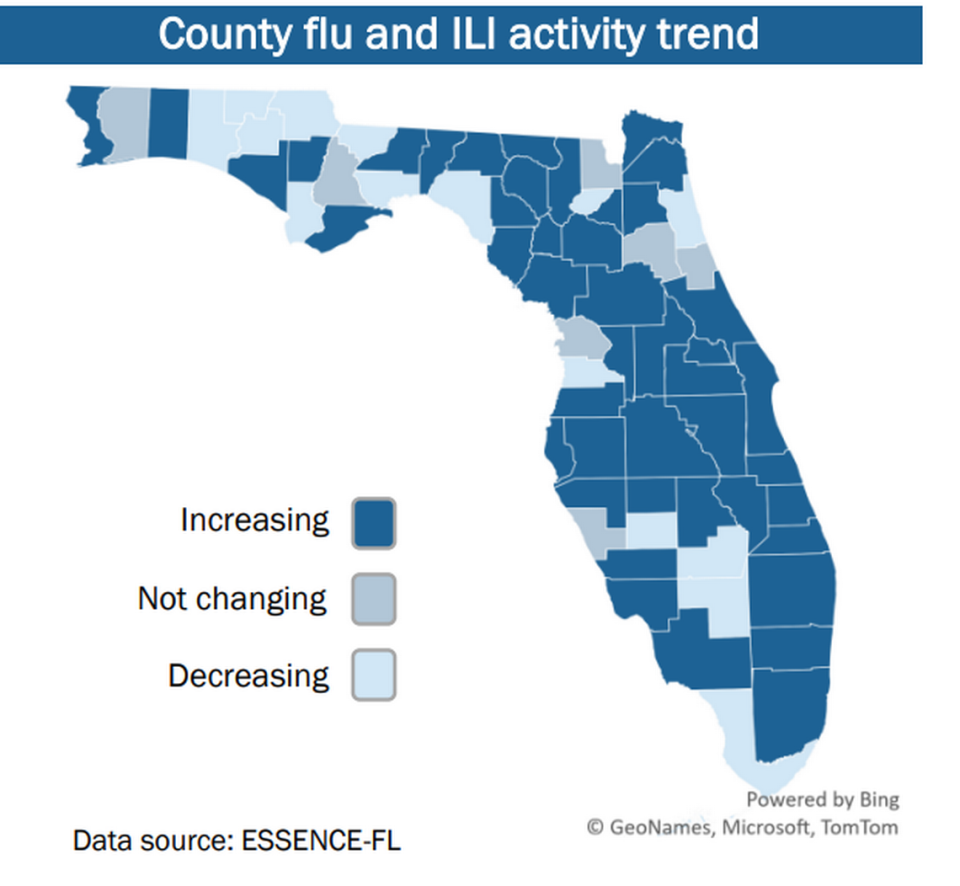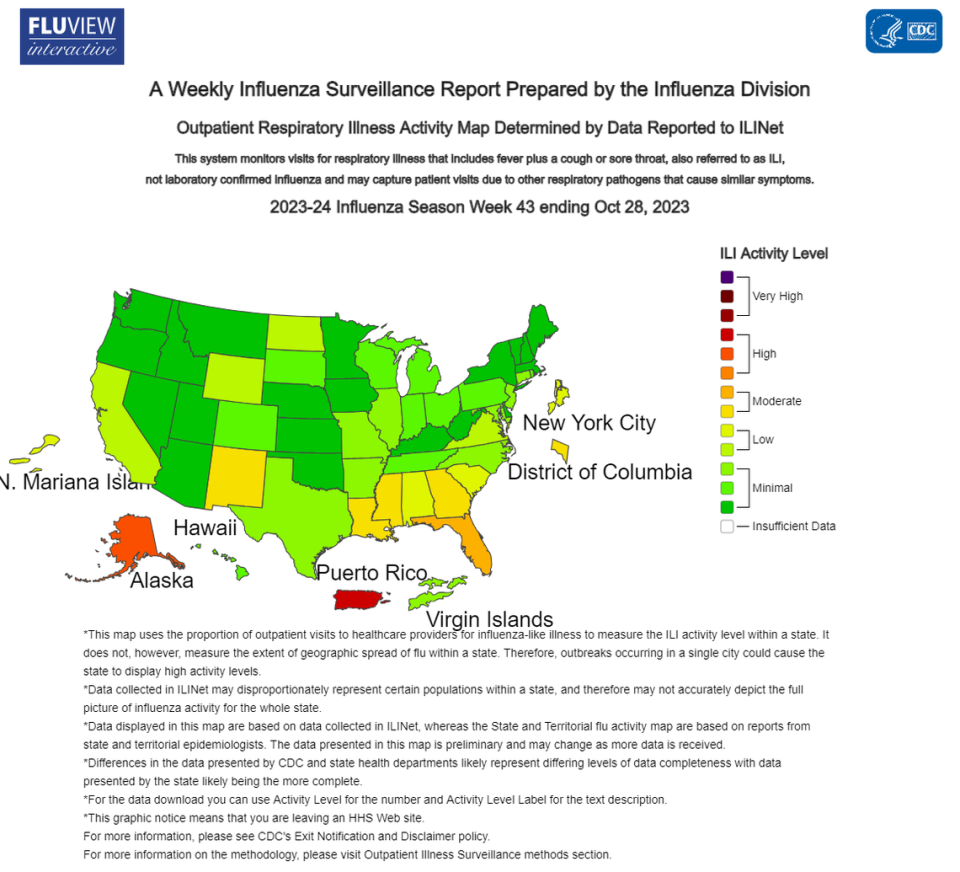Is flu rising in Miami and the rest of the country? Use this map to see where we’re sick
Have you noticed more people coughing, complaining about a sore throat, wiping a runny nose?
Well, it is flu season after all. And while influenza activity has remained fairly low nationwide, the respiratory illness is going around, with some parts of the country, including Florida, seeing a slight increase in activity.
The U.S. also reported its first flu-associated pediatric death of the 2023-2024 season this past week.
That’s according to Friday’s weekly influenza surveillance report from the U.S. Centers for Disease Control and Prevention, which looks at data through Oct. 28. The CDC says 1,607 people with influenza were hospitalized in the country, an increase from the previous report, though it’s still lower than last year.
What is the flu situation in Florida?
▪ In Florida, much of the state has seen an increase in reports of flu and influenza-like illness, including Miami-Dade, Broward and Palm Beach counties. Emergency department visits in Florida for influenza-like illness have ticked up slightly and have neared 5%, with the state’s flu positivity rate also seeing an increase, according to the most recent flu reports from the CDC and Florida’s health department, both which look at data through Oct. 28.

▪ Florida is considered to have “moderate” levels of influenza-like illness, according to the CDC. However, this doesn’t mean all of the reported visits are confirmed to be the flu. The public health agency notes that this could also include other respiratory illnesses that cause similar flu-like symptoms such as fever, cough and sore throat.

READ MORE: What’s affecting your health in Miami? Hospitals did a survey to help tackle the issues
How to protect yourself from the flu
▪ In the U.S., flu season runs through the fall and winter, with peaks typically occurring between December and February, according to the CDC. So far, more than 142 million doses of flu vaccine have been distributed in the U.S. for the 2023-24 season, the CDC says.
▪ The CDC recommends everyone 6 months and older get an annual flu shot to reduce the risk of getting ill this season. The CDC said its typically best to get the flu shot by the end of October. So if you’re not vaccinated yet, but are planning to do so, now is the time to schedule an appointment or walk in to your nearby CVS, Navarro Discount Pharmacy or Walgreens for a shot. It takes about two weeks after vaccination for you to be protected.
▪ Other ways to reduce your risk of getting ill will sound familiar — it’s just like what you had to do for COVID: Wash your hands frequently, avoid close contact with people who are sick, and disinfect frequently touched surfaces and objects to reduce the spread of germs.
READ NEXT: Which states have the best and worst healthcare systems? See how Florida ranks

